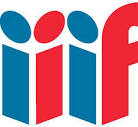Note: this was originally posted on the NYU Digital Scholarship Services blog.
 Wouldn’t it be great to be able to virtually reconstruct a manuscript whose physical pages are dispersed among multiple archives?
Wouldn’t it be great to be able to virtually reconstruct a manuscript whose physical pages are dispersed among multiple archives?
How about easily using a virtual lightbox to compare art images from museums around the world?
Don’t you want to be able to crop, zoom, annotate, embed, and reuse these images within your own websites to make scholarly arguments?
And what if you could do this without even having to download any images from any websites?
IIIF, the International Image Interoperability Framework, is designed to make this dream a reality. IIIF is a set of specifications designed to facilitate image (and eventually 3D image and multimedia) sharing among cultural heritage institutions (libraries, archives, museums, etc.) and provide users the ability to do the things described above.
I just attended the 2016 IIIF (International Image Interoperability Framework) conference in NYC. We saw examples of how IIIF is currently working, including a few different viewers for using IIIF-compliant images. Watch this short demo of a tool called Mirador, which showcases the key functionality of IIIF.
Basically, what institutions with image collections need to do is set up their image repositories to be IIIF compliant and the user needs to use a IIIF-compliant viewer, and away they go! The IIIF website has information on technical details and the IIIF community page has information at the bottom about how to stay informed, get involved, and find IIIF documentation, code, and specifications on github.
Over the coming year NYU Libraries will be exploring this technology and considering how to expand access to our many digital collections.



















